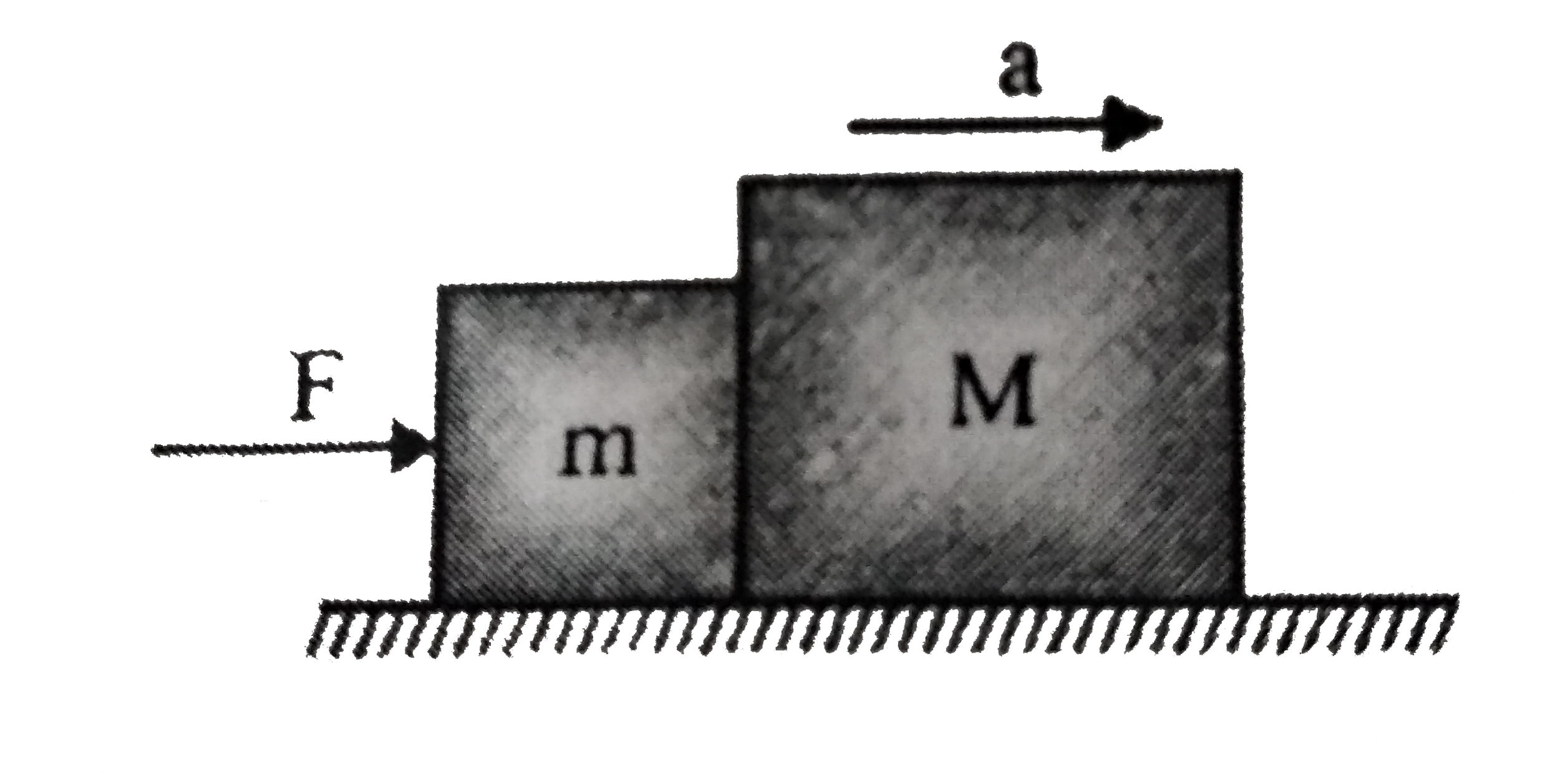Blocks are in contact on a frictionless table. A horizontal force F = 3N is applied to one block as shown. The force exerted by the smaller block m2 on block m1 is-

1 N
2 N
3 N
6 N
The correct Answer is:A
Step by step video, text & image solution for Blocks are in contact on a frictionless table. A horizontal force F = 3N is applied to one block as shown. The force exerted by the smaller block m_(2) on block m_(1) is- by Physics experts to help you in doubts & scoring excellent marks in Class 12 exams.
Updated on:21/07/2023Topper's Solved these Questions
- NEWTON'S LAWS OF MOTION & FRICTION BOOK - MOTIONCHAPTER - NEWTON'S LAWS OF MOTION & FRICTION EXERCISE - Exercise - 1 SECTION-B :- Pulley Block System
12 Videos
- NEWTON'S LAWS OF MOTION & FRICTION BOOK - MOTIONCHAPTER - NEWTON'S LAWS OF MOTION & FRICTION EXERCISE - Exercise - 1 SECTION-C :- Pseudo force, Weighing Machine
11 Videos
- NEWTON'S LAWS OF MOTION & FRICTION BOOK - MOTIONCHAPTER - NEWTON'S LAWS OF MOTION & FRICTION EXERCISE - Questions For Practice
25 Videos
- MODERN PHYSICS -1BOOK - MOTIONCHAPTER - MODERN PHYSICS -1EXERCISE - EXERCISE-4 ( LEVEL- II)
39 Videos
- NLM & FRICTIONBOOK - MOTIONCHAPTER - NLM & FRICTIONEXERCISE - EXERCISE-4 ( LEVEL-II)
15 Videos
Similar Questions
Two blocks of mass m=1 kg and M=2 kg are in contact on a frictionless table. A horizontal force F(=3N) is applied to m. Find the force of contact between the blocks. Will the force of contact remain same if F is applied to M?

View SolutionTwo blocks of mass m = 1 kg and M = 2 kg are in contact on a frictionless table. A horizontal force F(= 3N) is applied to m. The force of contact between the blocks, will be-
View Solution
Knowledge Check
Two blocks of 2 kg and I kg are in contact on a frictionless table. If a force of 3 N is applied on 2 kg block, then the force of contact between the two blocks will be
 A0 NB1 NC2 ND3 N
A0 NB1 NC2 ND3 NTwo blocks of masses 2 kg and 4 kg are in close contact on a frictionless horizontal table. A horizontal force of 18 N is applied to the larger mass. What is the force at the surface of contact between the blocks?
A4NB5NC6ND8NTwo blocks of masses M = 3 kg and m = 2 kg are in contact on a horizontal table. A constant horizontal force F = 5 N is applied to block M as shown. There is a constant frictional force of 2 N between the table and the block m but no frictional force between the table and the first block M, then acceleration of the two blocks is
 A0.4ms−2B0.6ms−2C0.8ms−2D1ms−2
A0.4ms−2B0.6ms−2C0.8ms−2D1ms−2
Two blocks are in contact on a frictionless table. A horizontal force is applied to the larger block, as shown in Fig. 5-53. (a) If m1=2.3 kg,m2=1.2 kg, and F = 3.2 N, find the magnitude of the force between the two blocks. (b) Show that if a force of the same magnitude F is applied to the smaller block but in the opposite direction, the magnitude of the force between the blocks is 2.1 N, which is not the same value calculated in (a). (c) Explain the difference.

View SolutionThe metal blocks A and B of masses 2 kg and 1 kg , respectively are in contact on a frictionless table A constant horizontal force of 3 N is applied to the block A . Calculate the force of constant between the two blocks . If the same force is applied to the block B then what will be the force of contact ? Can you explain the difference ?
View SolutionTwo blocks of mass = 2 kg and M = 5 kg are in contact on a frictionless table. A horizonatal force F (= 35 N) is applies to m. Find the force of contact between the block, will the force of contact remain same if F is applied to M ?

View SolutionTwo blocks of masses M = 3 kg and m = 2 kg, are in contact on a horizontal table. A constant horizontal force F = 5 N is applied to block M as shown. There is a constant frictional force of 2 N between the table and the block m but no frictional force between the table and the first block M, then the acceleration of the two blocks is-
View SolutionA block (A) of mass 3 kg in contact with a second block (B) of mass 2 kg rests on a frictionless horizontal surface. A horizontal force of 20 N is applied to push the block A. What is the force with which the block A pushes the block B?
View Solution
